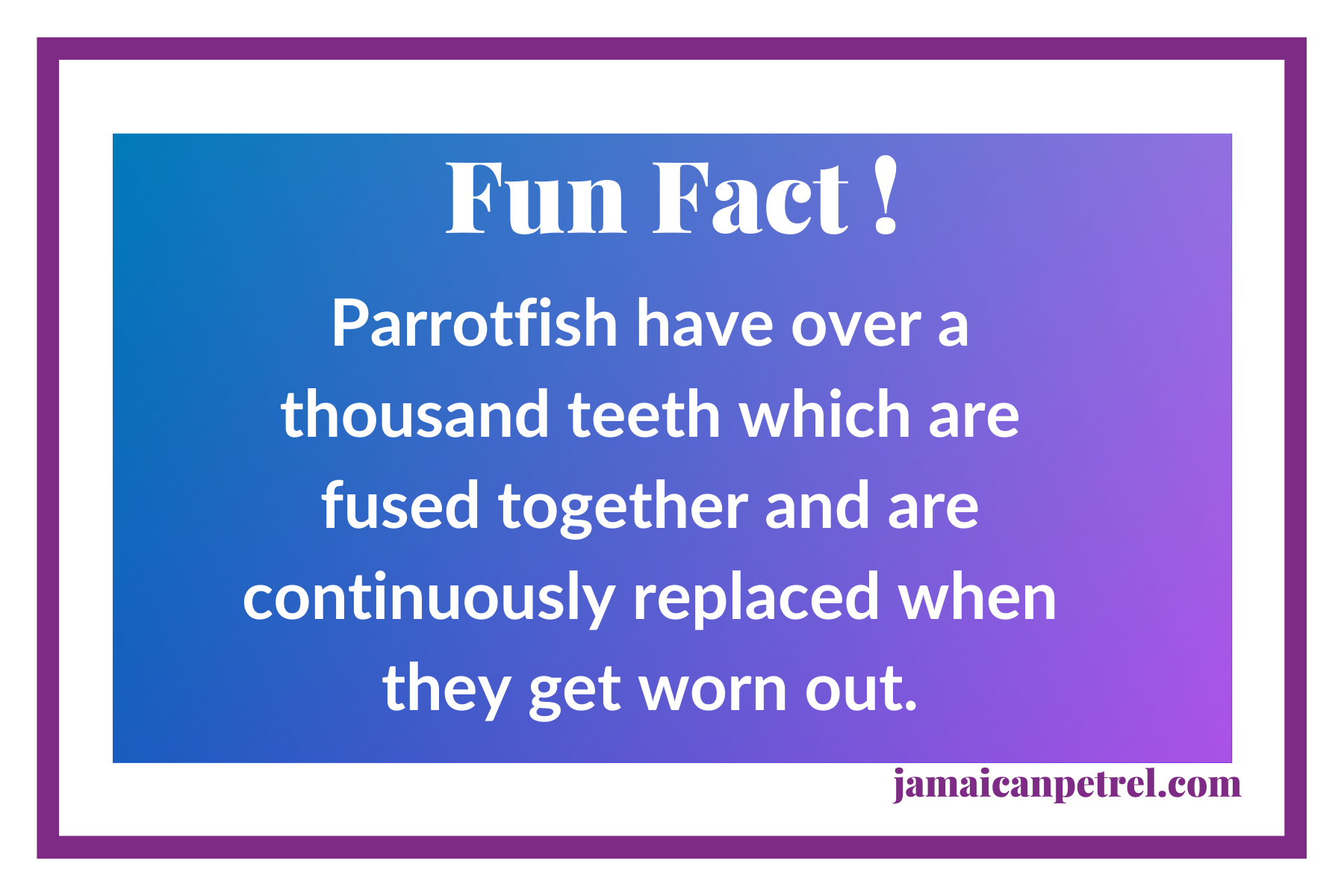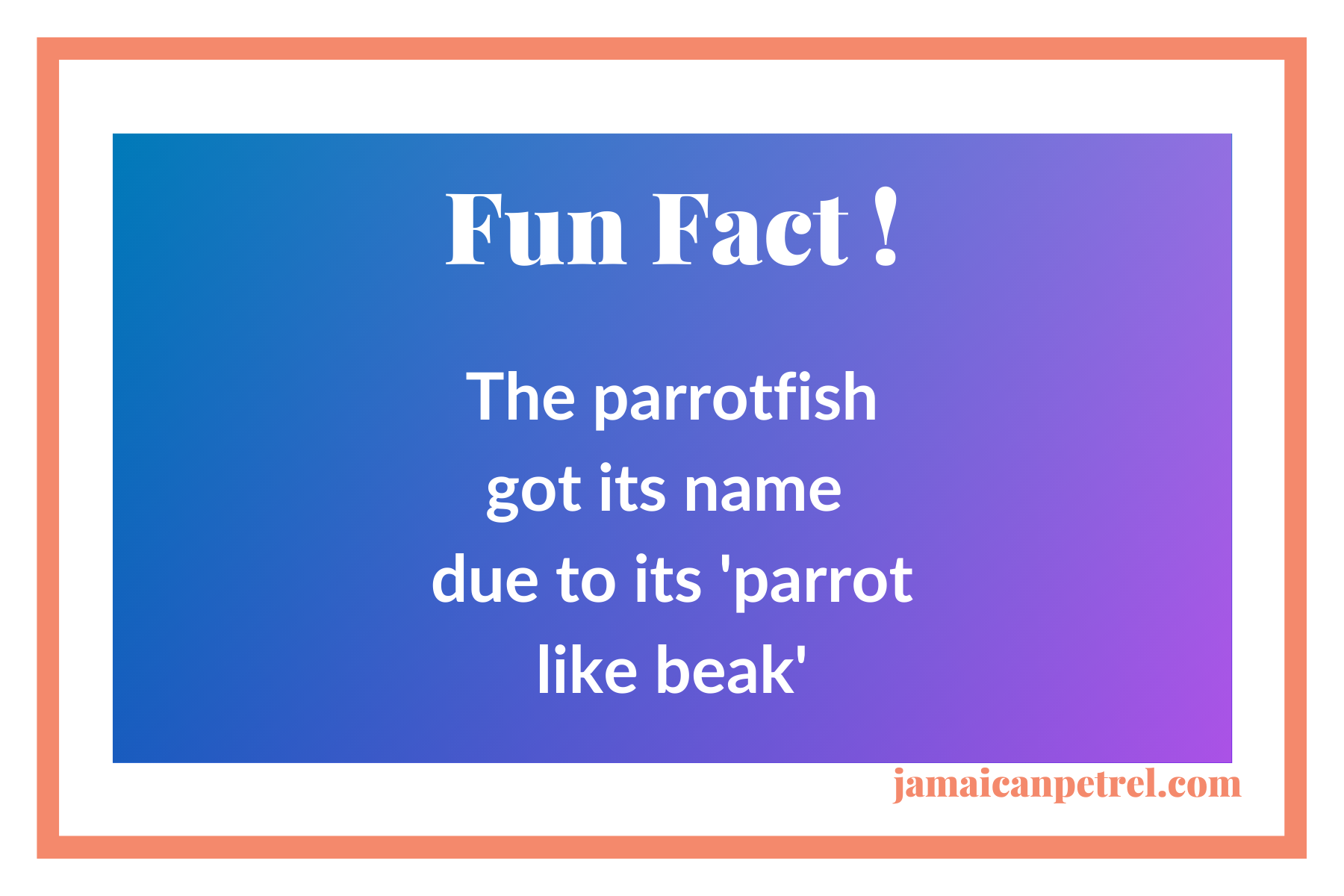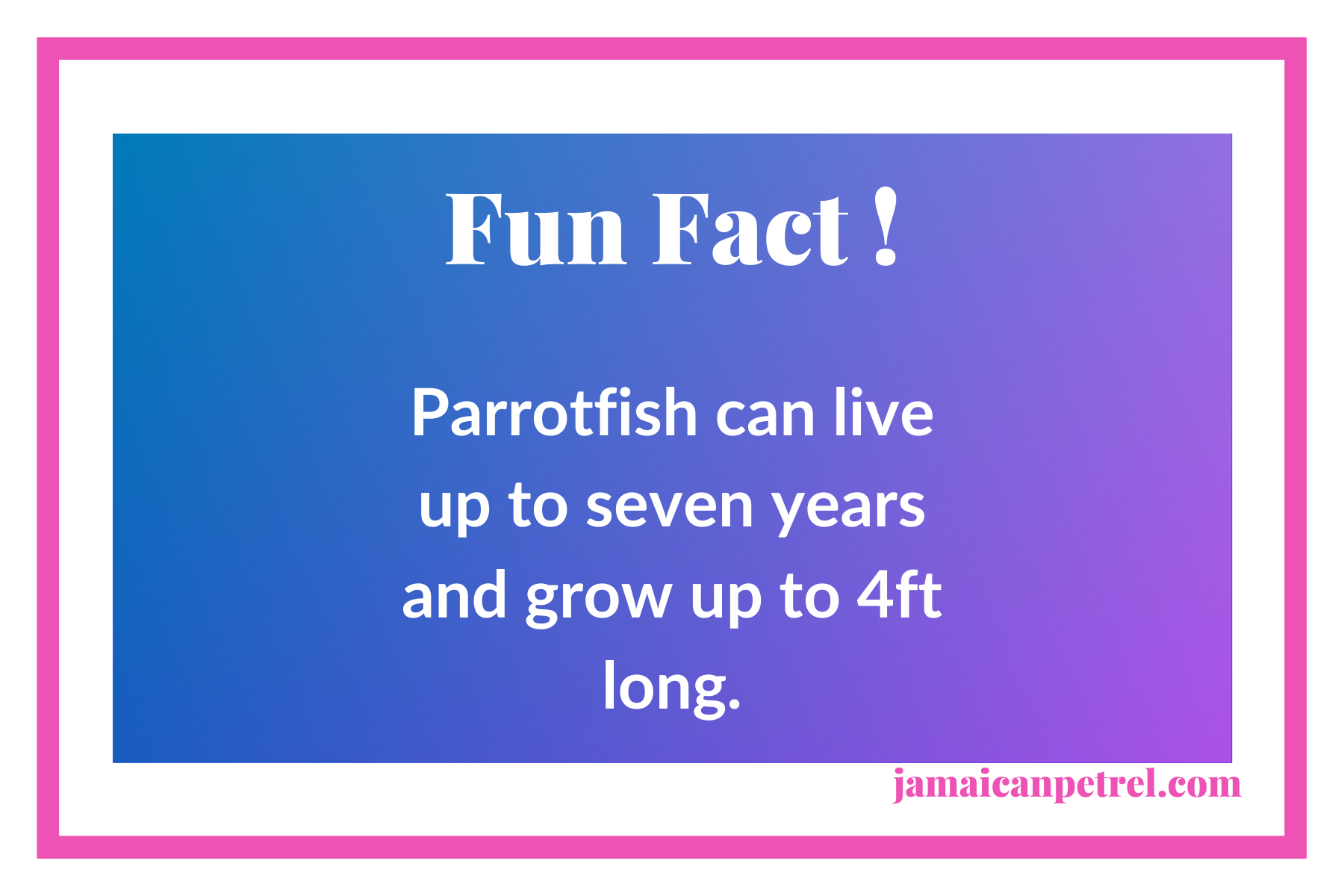PARROTFISH
Spotlight Parrotfish by Adona9 at the English Wikipedia, CC BY-SA 3.0, https://commons.wikimedia.org/w/index.php?curid=5992414
Family: Scaridae
Range: wORLD-WIDE
Habitat: cORAL rEEFS, sea grass beds and rocky areas
Lifespan: 5-7 YEARS
Conservation Status: Least concern
Description
Many different species of parrotfish can be found in Caribbean waters. These include Spotlight Parrotfish, Redband Parrotfish, Striped Parrotfish, Redtail Parrotfish and Queen Parrotfish just to name a few.
Parrotfish come in a variety of vibrant colours such as red, yellow, blue, green, gray, brown and black. Like many animals, parrotfish exhibit sexual dimorphism* in regards to their colouration, meaning male and female parrotfish do not look the same.
This fish was given its name due to its ‘parrot-like beak’. Parrotfish have hundreds of little teeth that fuse together to form this ‘beak’. These teeth are continuously replaced if broken off.
Parrotfish can live up to 5-7 years and can grow up to 4 ft long.
Range
World-wide
Habitat
Parrotfish can be found living among coral reefs, sea grass beds and rocky areas such as coastlines.
Diet
Parrotfish are herbivorous and primarily feed on algae growing on coral reefs during the day. This grazing of the coral promotes the growth of coral reefs when parrotfish bite off bits of coral to get to the algae.
The parrotfish’s digestive system then breaks down the coral into sand !
Breeding
Parrotfish reproduce by external fertilization where eggs and sperm are released in the water, which then results in a fertilized egg this process is called spawning. Some parrotfish species spawn on a daily basis.
Parrotfish provide no paternal care for their offspring.
Parrotfish take part in a polygynous mating system where they form territories with a single male and multiple females. Female parrotfish possess the ability to change their gender generally due to a low population.
Conservation Status
Least Concern
The parrotfish is officially listed as least concern on the IUCN* Red List but it is anything but. Parrotfish are under huge threat of overfishing as it is highly desired for food. This overfishing results in a decline of parrotfish which in turn results in the degradation of coral reefs if algae is left unchecked.



